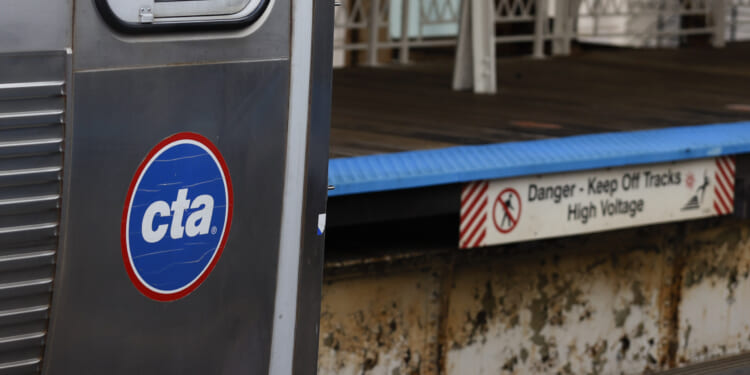Chicago Transit Authority violent crime hit its second-highest level since 2015, while the arrest rate dropped. CTA crime is threatening federal funding.
Violent crime on the Chicago Transit Authority rose to its second-highest level of the past decade in the 12 months ending in July as federal authorities threaten to cut Chicago transit funding unless public safety improves.
Federal funding is in jeopardy as CTA plans a fare hike of 25 cents per ride. Also, state lawmakers are considering a bail-out of the system and other Chicago-area mass transit.
Analysis of Chicago Police data shows riders reported 2,820 crimes at CTA stations and platforms between Aug. 1, 2024, and July 30, 2025. Riders also saw the second-highest number of violent crimes since 2015 and nearly double the number reported a decade ago.
Violent crimes end in arrests less often than other crimes. Fewer than 1-in-5 violent CTA crimes led to an arrest compared to a little over 1-in-4 for all transit crimes.
U.S. Transportation Secretary Sean Duffy in mid-September threatened to cut funding systemwide unless Chicago transit administrators showed how public safety was being improved. Data shows most crime is highly concentrated around a few stations.
More than half of all CTA crimes were at just 17 of the 123 stations in the city. Eight stations reported one or fewer crimes during the past 12 months through July.
There were 2.7 crimes for every 100,000 rides on the entire system for the past 12 months through July. So where are you most likely to be a crime victim?
- On the Green Line, about 3.5 of every 100,000 rides ended in a crime. The worst single stop anywhere on the system was on the Green Line at 63rd and Ashland in the West Englewood neighborhood. There were 39 crimes for every 100,000 rides.
- Next worst was the Red Line, with 3 crimes per 100,000 rides. The worst stop was the 69th street station in the Grand Crossing neighborhood on the South Side.
- The Brown Line reported the fewest at 2.1 crimes per 100,000 rides. Five stations along the line reported one or fewer crimes during the 12 months.
Four Red Line stops – Argyle, Bryn Mawr, Berwyn and Lawrence – were excluded from the station-to-station crime per ride comparison because of insufficient data. Those stations reopened in late July 2025 after years of renovations.
Among the crimes reported at CTA stations and platforms through July, the most common was battery, followed by theft. Reports of criminal damage increased the most in raw numbers at CTA stations during this time, rising from 259 to 398.
Police reported four homicides at stations during those 12 months. There was only one killing during the prior 12-month period.
Despite the rise in violent crime, CTA ridership increased by 3.6% during the past 12 months, continuing to grow since ridership hit a two-decade low during the pandemic. That translates to 3.5 million more rides than the prior year.
Cuts in federal funding could significantly impact riders’ commutes as the transit agency and other Chicagoland mass transit systems are already considering service cuts up to 40% starting in late 2026 if a $200-million shortfall is not addressed. State lawmakers have called for cost cutting and efficiencies, such as merging the region’s four transit agencies, ahead of any taxpayer bail-out.
City leaders can reduce serious crimes on public transportation and encourage more riders to return to the CTA by reducing low-level crime such as disorderly conduct and fare evasion and increasing the police presence at stations.
Other cities have already taken this approach. Washington, D.C., attributed a 19% decrease in crime on public transit to fare evasion enforcement and an increased police presence.
Research from the Manhattan Institute also shows police deter, prevent or uncover more serious crimes through routine arrests, citations and stops for nonviolent offenses such as fare evasion.
When Chicagoans feel safer, CTA ridership can move closer to its pre-pandemic levels. With more Chicagoans riding public transportation, the return of the pre-pandemic “safety in numbers” will make Chicago even safer for everyone and more fares will help avoid the cliff.










